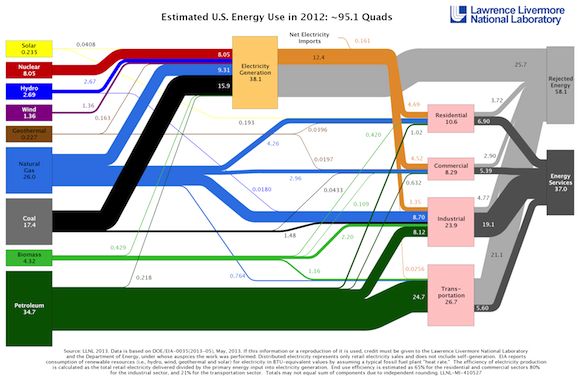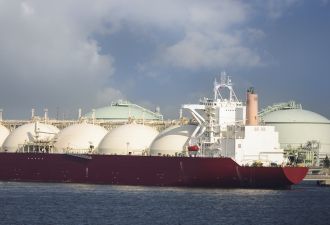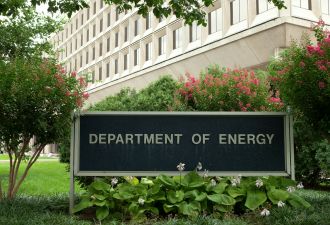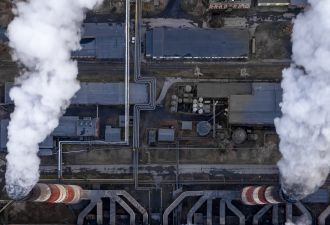An updated analysis published last month by the Lawrence Livermore National Laboratory suggests that the U.S. is just 39 percent energy efficient.
Put another way, more than half (61 percent) of the energy that flows through our economy is ultimately wasted.
The predominance of inefficiency is conveyed by the energy-flow diagram below, which shows the country’s energy fuel inputs (e.g., coal, natural gas) on the left side, and end-use energy consumption (e.g., residential, industrial, transportation) on the right side.
Of the 95.1 quadrillion British thermal units (also known as “quads”) of raw energy inputs that flowed into the U.S. economy in 2012, only 37 quads were ultimately used in a constructive manner (as “energy services”). The other 58.1 quads were, in essence, wasted. This waste, summarized in the top right of the diagram, is euphemistically classified as “rejected energy.”
Source: Lawrence Livermore National Laboratory
As has been the case for decades, most of the economy’s energy waste stems from electricity generation (because most power plants are relatively inefficient) and the transportation sector (internal-combustion vehicles are also notoriously inefficient, but they are getting better).
One should not expect any economy, power plant, or car to be 100 percent efficient. Indeed, the second law of thermodynamics tells us that achieving perfect thermal efficiency is about as possible as unscrambling a scrambled egg. But 39 percent efficiency? It certainly leaves some major room for improvement.
And some experts argue that even 39 percent efficiency is painting a rosy picture: defining energy as the “capacity to do useful work” (rather than strictly as a commodity measured by its energy content), physicist Robert Ayres and his colleagues estimate that the true energy efficiency of the U.S. economy is closer to 14 percent.
So how does Lawrence Livermore National Laboratory’s 2012 energy flow analysis compare to its analyses in other years? Strikingly, their findings suggest that 2012 was the most energy-wasteful year in more than a decade (and the third most profligate year since LLNL began producing these studies in the 1970s). By LLNL’s historical calculations, the amount of energy wasted annually has hovered between 50 percent and 58 percent during the last ten years. But in 2012, the waste calculation shot up to 61 percent.
Why? AJ Simon, a senior researcher at LLNL who leads the energy flow studies, told Opower that the increased waste number stems in part from updated assumptions about the end-use efficiency of vehicles and household appliances. Specifically, a pair of recent analyses of overall energy consumption in the transportation and residential sectors prompted LLNL to adopt more realistic engineering estimates for 2012.
Simon’s team now estimates that U.S. cars, trains, planes and the like are on average 21 percent efficient (rather than 25 percent, as previously surmised) and U.S. household energy uses like heating, cooling, and lighting are on average 65 percent efficient (rather than 80 percent). Holistically, these estimates may yet still be overly optimistic, in that they don’t reflect behavior-related energy inefficiencies, such as over-drying one’s clothes or leaving the air conditioner running in an unoccupied house.
Feeling nostalgic for a time when the U.S. economy used more energy than it wasted? You’ll have to go back to 1970, in the days when LLNL’s diagrams weren’t so colorful. In that year (which also featured the first Earth Day celebration), the country eked out a slightly better than 50 percent efficiency performance, wherein 31.1 quads of “useful energy” eclipsed 30.6 quads of “rejected energy.”
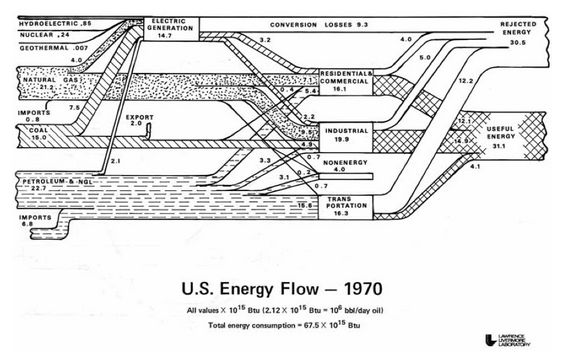
Source: Lawrence Livermore National Laboratory, November 1973
Since 1970, however, the substantial growth in energy use for electricity and transportation -- sectors that, as mentioned, historically have not been great at turning fuel into work -- has caused energy waste to gradually prevail over energy productivity.
Fortunately though, the nation is seeing a promising wave of technological advances, utility-sector innovation, behavioral-science approaches, and policy breakthroughs that are helping to make energy productivity not just a serendipitous achievement in 1970, but an enduring reality for the decades ahead.
***
This piece was originally published at Opower's Outlier blog and was reprinted with permission. Follow @OpowerOutlier on Twitter.
Barry Fischer is the head writer at Opower, where he manages the Opower Outlier blog.

